What to do if dill grows poorly and why such a problem could arise
Dill is an unpretentious herbaceous plant. However, without proper care, instead of a thick and green crop, thin blades of grass of yellow or red color may grow, or the plantings may not sprout at all.
What causes this problem? Why doesn't dill sprout? grows poorly? Detailed answers to these questions are in our article.
Reasons why dill does not grow well
Dill is an annual plant, traditional for Russian garden beds. Every year, gardeners sow new seeds so that there is fresh and aromatic grass on the table throughout the season.
But there are several reasons that negatively affect the growth of herbaceous crops: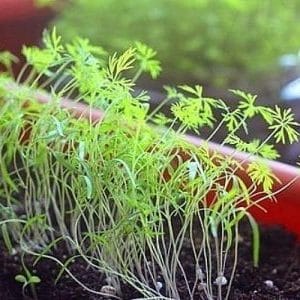
- unsuitable soil;
- violation of seed planting techniques;
- improper watering;
- insufficient protection against diseases and pests;
- improper care of the plant;
- uncomfortable conditions for growth.
Poor soil composition
Before planting seeds, the soil is prepared and fertilized using organic fertilizers. Per sq. m add 0.3 buckets and 1 tbsp. l. mineral mixture "Kemira universal". The furrows are watered with a solution of manure.
Reference. Dill does not grow well in highly acidic soil. However, gardeners do not recommend adding lime.
Errors during landing
To avoid mistakes when planting seeds, follow these rules:
- Per sq. m of well-moistened soil, 1 g of seeds are planted.
- The seeds are planted carefully so as not to damage them. When planting in dry soil, the risk of plant death increases.
- Deep furrows are not made for seeds.Planted in the ground to a depth of no more than 2 cm. Otherwise, the emergence of seedlings will be delayed.
- To ensure that dill grows throughout the season, the seeds are planted in stages and different varieties are used. It is enough for 14 days to pass between plantings.
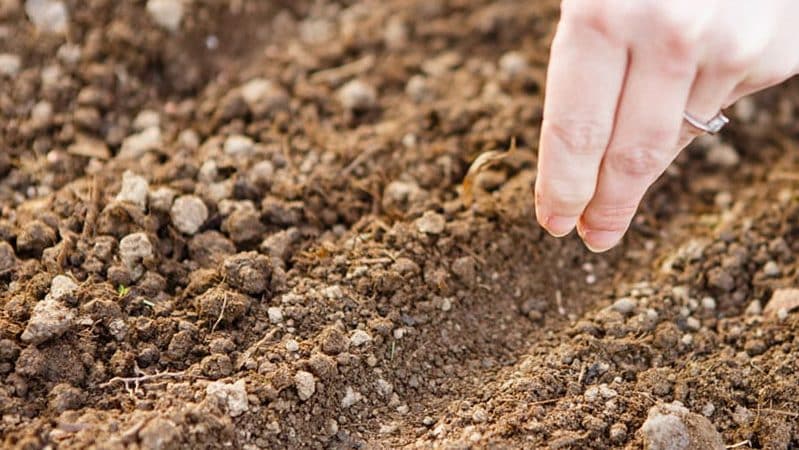
Incorrect watering mode
Plants are watered by drip 2-3 times a week with warm water. Cold water causes illness. In hot weather, 5-7 waterings are carried out.
Severe waterlogging leads to rotting of the roots and loss of aroma. But dry soil also stops the growth of the crop.
Diseases and pests
If treatment is untimely, the plant dies. Therefore, it is so important to prevent the appearance of pests such as aphids and bedbugs, and to stop the spread of diseases such as blackleg and fomoz.
For this purpose, preventive measures are used:
- The land for sowing is prepared in advance. Remove all weeds and treat the soil with antifungal agents.
- Before planting, the seeds are disinfected. They are immersed in a solution of potassium permanganate for 20 minutes. Add 2 g of the drug to 200 ml of water.
- Plants are not flooded so that the soil does not become waterlogged or waterlogged.
- To ensure proper respiration of the roots, the soil is regularly loosened.
Lack of lighting
A bed for dill is built in a lighted place. With a lack of light, the stems and leaves of the plant stretch, become pale and turn yellow.
Problems with seeds
It is better to purchase seeds for planting dill in specialized stores or prepare them in advance.
Reference. If dill spreads by self-seeding, then it manages to germinate. But in this case, the plant loses its original varietal qualities.
For planting, use well-ripened seeds that were stored in a dark and dry place.
Dill varieties

There are three types of dill varieties: early, middle and late.They differ in the period of seedling formation.
Early varieties develop in 1-1.5 months. They have little greenery - an average of six leaves, but they produce high-quality seed material. These varieties include Aurora.
Medium varieties grow 1-1.5 weeks after early varieties. They have more greenery. Up to 10 leaves are formed on one bush. The best mid-season varieties are Alligator, Umbrella, Richelieu.
Late varieties germinate 2.5 months after germination, forming an average of 10 leaves. Late varieties include Salut.
Why didn't the dill sprout?
One of the reasons why dill does not sprout is the essential oils that cover the seeds. To make the plant germinate faster, do the following:
- Seeds wrapped in gauze are immersed in warm water (temperature 50-60°C) for two minutes.
- Next, the seeds are cooled in water at room temperature (20-25°C). Leave it like this for 48 hours.
- The water is changed six times and the seeds are washed.
- Before sowing, dry on a soft cloth.
This way the sprouts sprout faster.
Means for stimulating the growth of dill
What to do if all the conditions for caring for the crop are met, but the dill still grows poorly? In such a situation, additional means are used to stimulate its growth.
Feeding
To stimulate the growth of dill, organic and mineral fertilizers are used.
Organic
Organic fertilizers consist of animal or plant products. They are well absorbed by the root system. Organic fertilizers are often applied before sowing seeds.
- Manure – excellent fertilizer for dill. Mullein contains nitrogen. Thanks to this substance, a green mass appears. Fertilizing is used when the plant produces 2-3 leaves.For a day, 1 liter of manure is soaked in 10 liters of water. The solution is poured over the dill.
- Ash. Gardeners use ash to feed plants. In the morning or evening hours, it is scattered around the beds, loosened and watered.
Mineral fertilizers
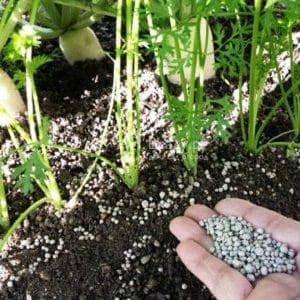
Mineral supplements contain substances necessary for proper growth and development - phosphorus, nitrogen and potassium.
Mineral fertilizers are applied several times per season. Water once and spray the plants 2-3 times. Water the dill two weeks after the sprouts appear. Spray the crop after the active growth phase. The break is 14 days.
Ammonium nitrate. Fertilizing with ammonium nitrate is carried out so that the dill bushes and does not turn yellow. Add 8 g of substance per square meter. m.
Elimination of agrotechnical errors
There are a number of traditional agricultural practices that contribute to growing dill:
- Follow the rules for planting herbaceous crops (soil, planting site, soaking and disinfection of the soil).
- Crop rotation: every year the dill beds are located in different places. Remove weeds.
- The plant is planted in early spring.
- In dense plantings, remove excess bushes so that there is a distance of about 15 cm between them.
- A different seed is planted each year or the variety is replaced every three years.
Disease and pest control
If not properly cared for, the plant begins to get sick and pests appear on it. In this case, gardeners use folk remedies or chemicals.
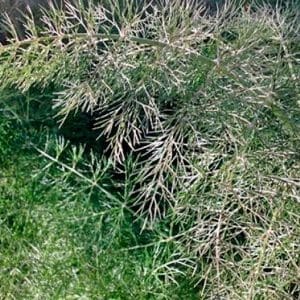
- Powdery mildew. Appears on the plant white coating, the crop withers, becomes tasteless and unfit for food. Ash is used to combat the disease. Half a glass of ash is poured into a liter of boiling water and left for two days.After this, filter and add 5 g of laundry soap in a mushy state. The plants are treated with the solution twice with a break of a week. A broad-spectrum chemical called Bayleton begins to act within three hours after treatment.
- Blackleg. The root collar rots. Dill turns black, seedlings become weak and die. They fight the disease with traditional methods: onion peels or ash solution. Spray the plants or add granules of the preparations “Baktofit” or “Trichodermin” to the soil.
- Fomoz. With Phoma, black spots appear on dill. The disease is caused by a harmful fungus that produces several generations per season. Spores are spread by wind or rain. The affected areas of the plants are removed, the remaining bushes are sprayed with Bordeaux mixture.
- Aphid. Aphid colonies destroy plants. To prevent the appearance of pests, gardeners recommend planting chamomile nearby. It will repel pests. When aphids appear, the plants are sprayed with tobacco infusion. 200 g of leaves are crushed and poured into 2 liters of water. The solution is infused for 24 hours. It is filtered and 20 g of grated soap is added. Plants are treated in the morning and evening.
- Bedbugs. They feed on plant sap and destroy crops. Most often they sit on the tops of plants. They are removed by hand.
- Cicadas. These are white butterflies measuring about 5 mm. They feed on plant sap. Brown spots appear on the dill, and the shoots dry out. They fight pests with garlic infusion: add 250 g of chopped garlic to 1 liter of water and leave for a week. Then the solution is diluted with water in a ratio of 1:50 and the culture is treated.
Advice from experienced summer residents
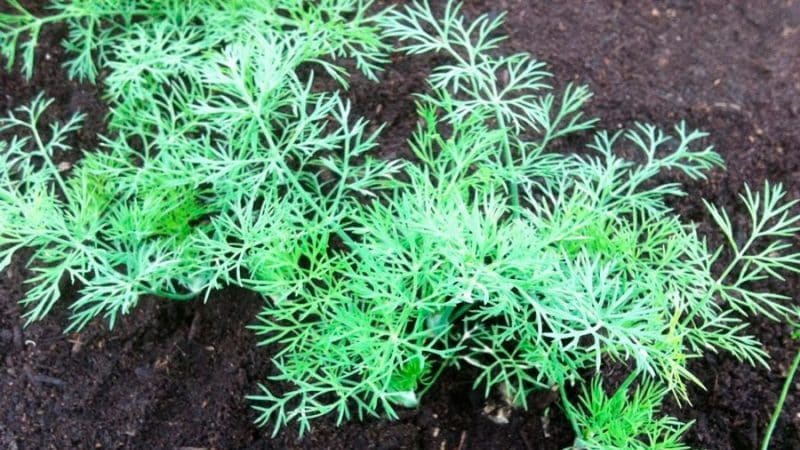
In order for dill to grow well and not be delayed in development, experienced gardeners advise:
- Sow dill in open ground in the spring, in April-May.
- For watering, use a watering can or hose with a sprinkler.
- When grown in a greenhouse, maintain the optimal temperature for dill growth at 13-17°C.
- To accelerate ripening, plant the crop in seedlings. Seedlings are grown at home. Previously soaked seeds are planted in containers with soil. Add humus to it. The land is well irrigated. Next, cover with film and leave in a warm place. After 1.5-2 weeks, sprouts appear, the film is removed. When five leaves appear on the crop, the seedlings are planted in open ground.
If you leave plants on seeds, do not pick off its leaves so that the crop grows healthy and strong.
Conclusion
For the full growth and development of plants, dill seeds are disinfected before planting, soaked and planted in fertile soil in a sunny and well-ventilated place. Water 2-3 times a week, and in hot weather - every day.
Fertilizing is applied 3-4 times per season. Before sowing, fertilize the soil well. Two weeks after the sprouts appear, the soil is fed using the root method. The sprouts are irrigated only after the active growth phase. Irrigation interval is 14 days.